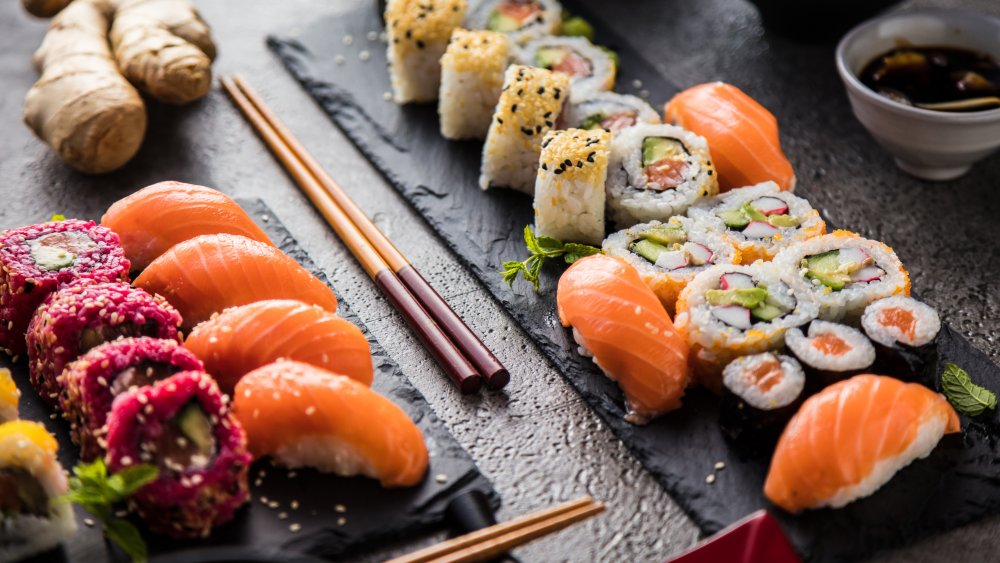Nutritionist Exposes Everything Fake About Sushi
Sinking your teeth into a buttery piece of sushi is one of the most enjoyable things on earth. One sweet bite of red snapper or tender tuna, and you're instantly whisked away by the clean, fresh taste of the ocean. Problem is, there's an 87 percent chance you're not actually eating snapper and a 59 percent chance that's not tuna cushioned on your plate (via Oceana).
Americans are second only to China when it comes to worldwide seafood consumption. Partially because we adore it, and also because The American Heart Association recommends that we eat two servings of seafood each week. Fish is a great source of protein, low in saturated fat, and rich in omega-3 fatty acids, healthy fats that reduce your risk of heart disease and stroke. The biggest benefit of eating seafood seems to occur when you replace less healthy foods, like red meat and/or processed meats, with fish (via Harvard Medical School).
But what if you paid a pretty penny for sushi-grade tuna, and then found out you were eating escolar, a type of snake mackerel (via The Kitchn)? Just try keeping your blood pressure in check after receiving that news.
Better sit close to the bathroom
Escolar is sold under the names "super white tuna" and "king tuna", and it's cheap, sustainable, and mimics tuna just fine. Unfortunately, the oily fish also contains wax-esters, oils unlike omega-3's that are not edible, so our stomachs won't absorb them, and the body flushes them out (via Global Seafoods). And the body eliminates those oils fast, which can lead to a bad case of diarrhea within an hour of eating a fillet. You might not want to stay for dessert.
Dubbed the "Ex-Lax-Fish," escolar is banned in Japan and Italy, but not the U.S. (via Inside Edition). Even the governments of Canada, Sweden, and Denmark require that all escolar come with warning labels (via The Kitchn). The scary thing is, in the U.S., escolar doesn't just impersonate tuna, it can be disguised as butterfish, waloo/walu, Chilean sea bass, grouper, bluefin tuna, albacore tuna, black cod, blue cod, rudderfish, Pacific Cod, and Atlantic cod (via Nomlist). That's a big school of fraud. And it doesn't matter where you dine, Oceana found that 44 percent of all the grocery stores, restaurants, and sushi venues they visited sold mislabeled seafood.
So what's a fish-lover to do? When it comes to sushi, Atlantic and Pacific salmon are probably your best bet (via Business Insider). The fish may be farmed – even when it's labelled "wild" – but at least it's still salmon. And, although it's not raw, shrimp is a difficult thing to copycat. Other great choices include mackerel, squid, halibut, sardines, and sea urchin (via Thrillist).
The bottom line? When navigating seafood choices, whether it's at the grocery store or your favorite sushi joint, be prudent, and you can enjoy succulent seafood while getting what you paid for.
Robin Miller is a nutritionist, chef, and food writer.

